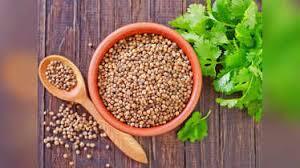
Coriander cultivation in India is expected to decrease, leading to a potential rise in prices. Experts predict that coriander prices could increase due to reduced sowing and lower expected production. Farmers are increasingly opting for wheat cultivation, which offers better returns, resulting in less coriander being planted than previously anticipated. As of the latest sowing data for the 2024-25 Rabi season in Gujarat, only 16,940 hectares have been sown, which is just 10.69% of the normal sowing area of 1,58,440 hectares, indicating a sharp decrease. Sowing for crops like gram has also been lower than expected, while garlic and onion cultivation has slightly increased due to favourable prices. On November 18, coriander prices in the spot market saw an increase, with prices in Gondal at INR 76,695 (+INR 1,488) and in Kota at INR 75,481 (+INR 574). Mandi prices for coriander include INR 67,050 (+INR 1,000) for Badami and INR 70,900 (+INR 800) for Eagle in Kota, while in Ramganj, Badami is priced at INR 71,900 (+INR 1,850) and Eagle at INR 74,900 (+INR 1,800)., reflecting an upward trend. The price gap between spot and futures markets has narrowed but may widen again as prices are expected to rise. India is anticipated to import substantial coriander to meet domestic demand, with Bulgarian and Ukrainian varieties entering the market. Experts recommend that farmers and traders consider selling their coriander while prices are favourable, as declining domestic production combined with increased imports could keep prices firm. Consequently, farmers and traders need to stay informed about market trends to navigate the challenges and opportunities presented by the changes in coriander cultivation and pricing.
Source: CM Broker , Directorate of Agriculture, Gujarat